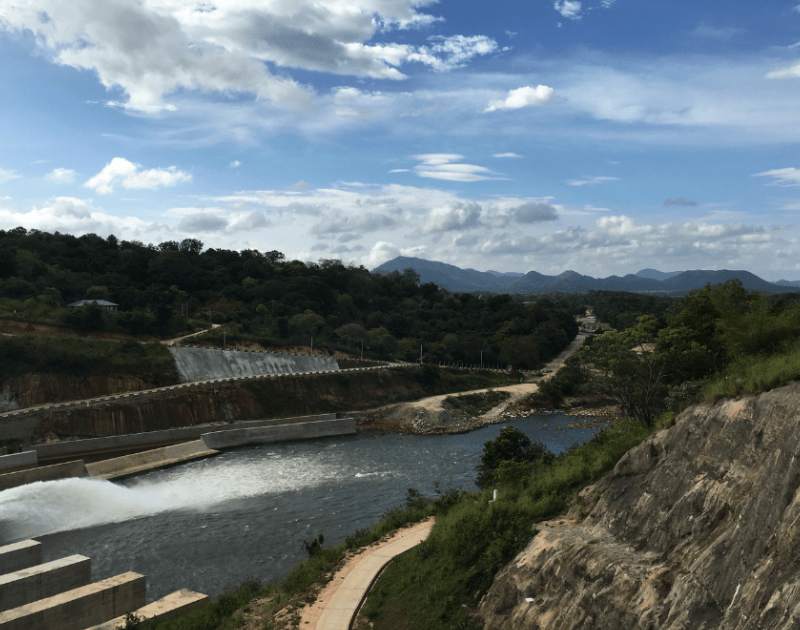
- Home
- Knowledge Insights
- Refreshing Growth in Sri Lanka’s Provinces: Changing the Narrative
For a while now provinces outside Sri Lanka’s Western Province have been characterized as ‘lagging regions’, due to their slower growth trajectory, smaller share of national output, and more pronounced weaknesses in development indicators like multidimensional poverty. The term ‘lagging regions’ entered the lexicon of Sri Lankan development-speak in the early to mid-2000s as the idea of regionally-balanced development came into prominence and gained further traction through a report titled ‘Reshaping Sri Lanka’s Economic Geography’ by the World Bank. Since then, the term ‘lagging regions’ was heard used by nearly all development agencies, private sector chambers, government officials, academics and development experts. But has the terminology itself contributed to the problem, and is it time for a change?
Changing narrative, changing perspective
During a visit to the Northern Province a few years ago, as part of visioning a SME project with an international expert, I began reflecting on this issue. The dominance of the Western Province in national output has been steadily declining (from 50% around a decade ago to around 43% today), giving way to several other provinces, like the Southern and North Western. While these other provincial economies are not half as large as the Western Province – given the latter’s unparalleled connective infrastructure and industrial agglomeration – it is well recognized that they offer immense economic potential that can be harnessed.
‘Lagging regions’ seems such a terrible name to give provinces that are eager to attract private sector investment, spur new business activity, generate new sources of growth, and provide new economic opportunities for the people living there. Instead, wouldn’t something more forward-looking, progressive, optimistic, and speaks of ‘the possible’ be smarter? Try, for instance, ‘Secondary Growth Hubs’. Calling these regions ‘Secondary Growth Hubs’ instead of ‘lagging regions’ gives these regions an optimistic outlook, which is needed if you want to foster growth there. Which investor, local or international, feels attracted by a term like ‘lagging region’? Whereas a ‘Secondary Growth Hub – now that sounds like a place where a frontier investor looking to get in early might be interested.
Similar thinking has gained ground elsewhere. For instance, the European Union has a ‘Catching-up Regions’ initiative in Poland’s slower growth provincial economies and India’s Niti Aayog has an Aspirational Districts initiative focussing on social welfare indicators in poorer areas.
From a name to an approach
At the heart of the ‘regionally-balanced development’ agenda is the concept of ‘inclusive growth’. Inclusive growth is not about redistributing gains from growth to people living in less prosperous areas, but rather inclusive growth is about ensuring more and more people gain from growth and more and more people are productively involved in creating that growth. For this, ensuring that provincial economies are seen as growth hubs that can contribute to national income and be part of inclusive growth, rather than lagging regions that need ‘help’ with catching up, is critical. This is especially true in a context where, over ten years since the end of the war, concessionary donor money for development financing has dried up.
I debated with an international colleague some years back on whether such things are “just a name change” or “more than just word games”. Arguably, regions are competitive only if they are attractive in terms of other factors of the locality – quality of life, good schools, safety, options for leisure, etc., and without that the area will lose the young and talented, which in turns affects growth prospects there. If the province is able to provide some of these, the young will stay and your chance of becoming economically successful increases. Calling a place a ‘lagging region’ is counterproductive to these objectives.
A change in narrative from ‘lagging regions’ to ‘Secondary Growth Hubs’ will be the first step in an overall strategic transformation of provincial economies. It must be substantiated with a change in approach. Treating them as ‘Secondary Growth Hubs’ necessarily means treating them through a lens of competitiveness. This means taking a closer look at what the constraints to growth and doing business in these economies are, and solving them. For instance, what are the licensing and other regulatory burdens that are hurting businesses? Are public sector institutions at provincial and district level geared to promoting SMEs and investment? Are infrastructure improvements addressing not only social needs but economic competitiveness needs as well? Is town and city planning considering business, environmental and social needs and trends? Are institutions based at the centre (e.g. ITI, SLSI) linked well to the needs of the regions and are they serving them? Are there value chain linkages created for entrepreneurs in the regions to expand to markets across the country and beyond? Essentially, ensuring ‘framework conditions’ for growth are improved, the regions are attractive for entrepreneurship and are successful in creating prosperity.
Refreshing provincial growth and competitiveness
Seeing Sri Lanka’s provincial economies as Secondary Growth Hubs certainly helps to transform how all stakeholders engage in partnerships to boost prosperity there. It helps the government, development partners, NGOs, and the private sector, look at them not in terms of how they need to be helped to get out of being ‘lagging’ but rather in terms of how they need to be partnered in creating more inclusive economic growth. It requires a shift away from handouts. It requires a shift away from welfare and subsidies towards productivity improvement, competitiveness enhancement and skills development. It requires a shift away from hyper-centralization of development decision making to enabling provinces to play a genuine role in shaping their own economic future. It requires a shift in mindset from seeing them as regions that need to be ‘brought up to a certain national standard’, to seeing them as regions that have inherent indigenous potential that needs unleashing with the right support. While the Western Province currently accounts for over Rs. 4 trillion of national output, all other Provinces contribute less than Rs. 1 trillion each. Through a strong ‘Secondary Growth Hubs’ strategy, ten years from now Sri Lanka should aim to have at least four other provinces contributing Rs. 2 trillion to national output. Our provincial economies certainly have the potential to make it happen. It’s time for a new outlook.


